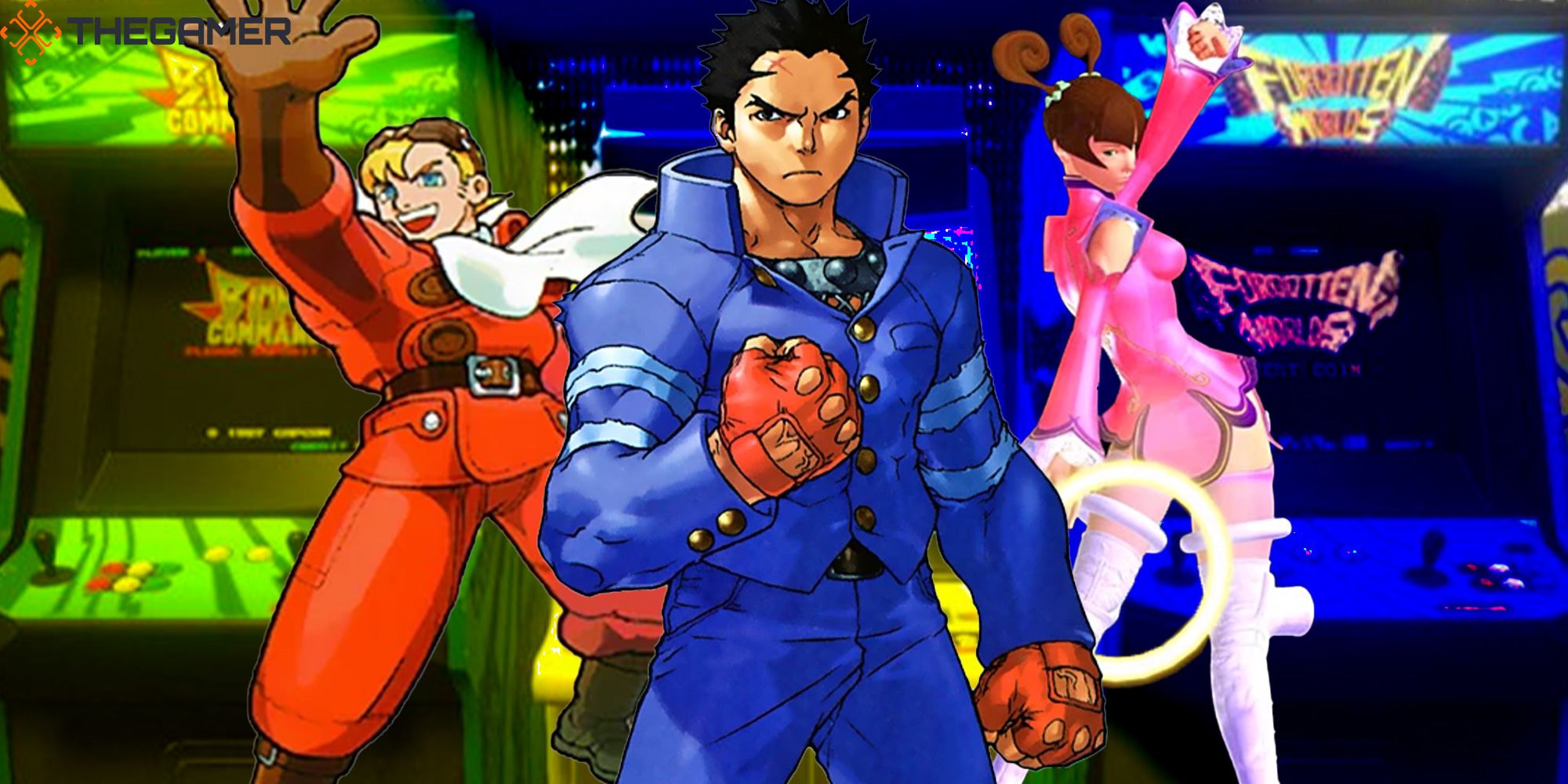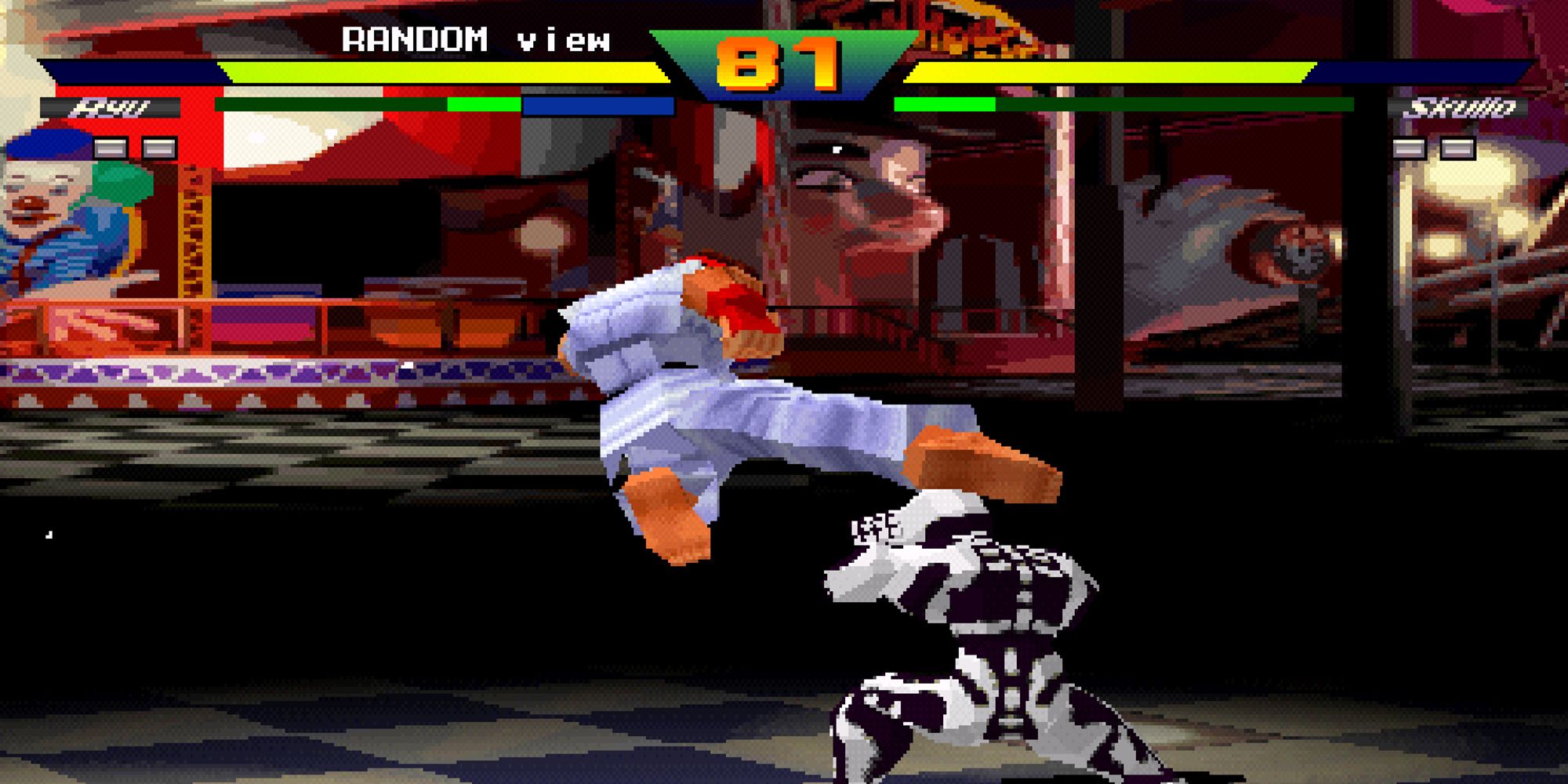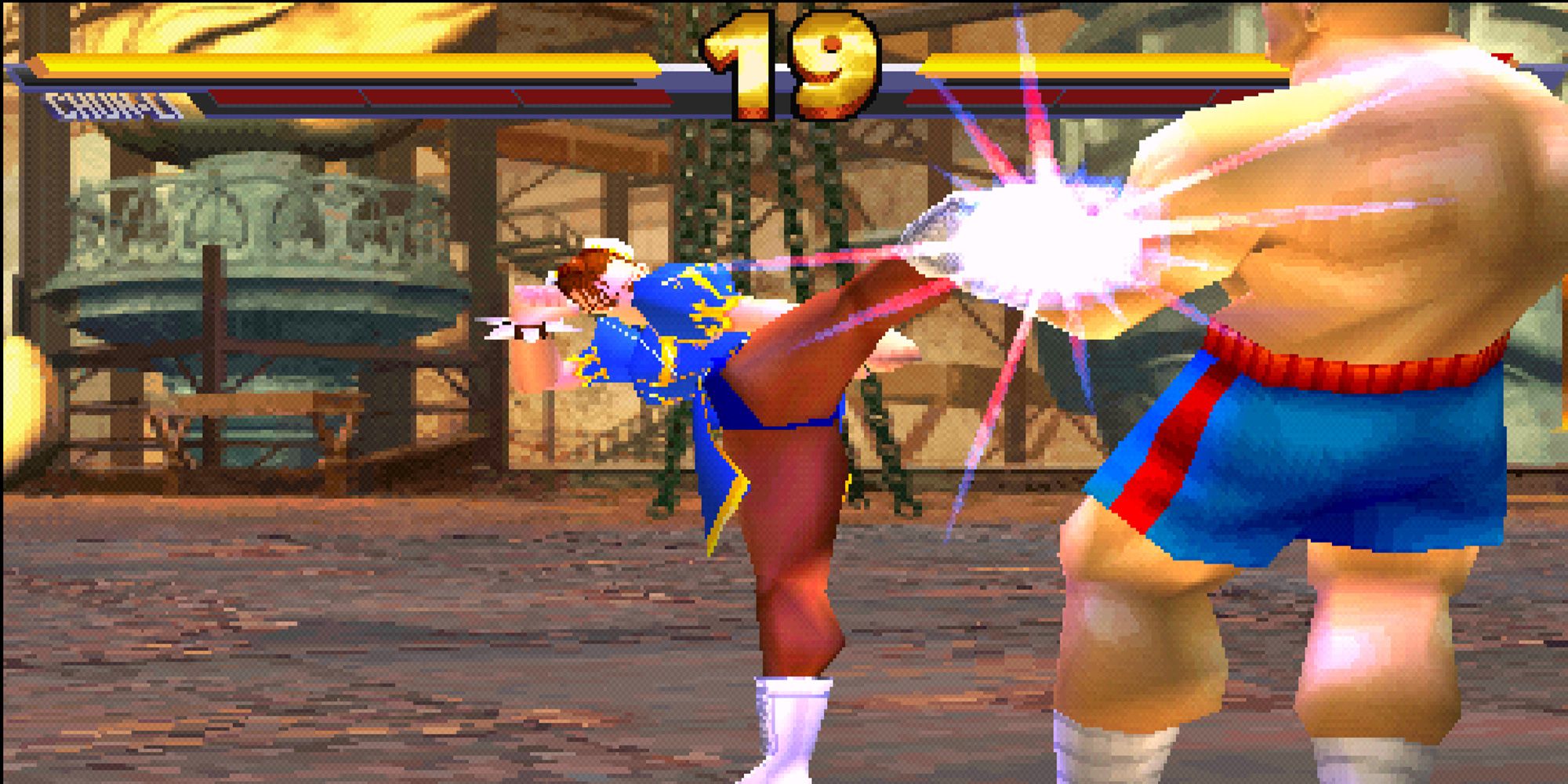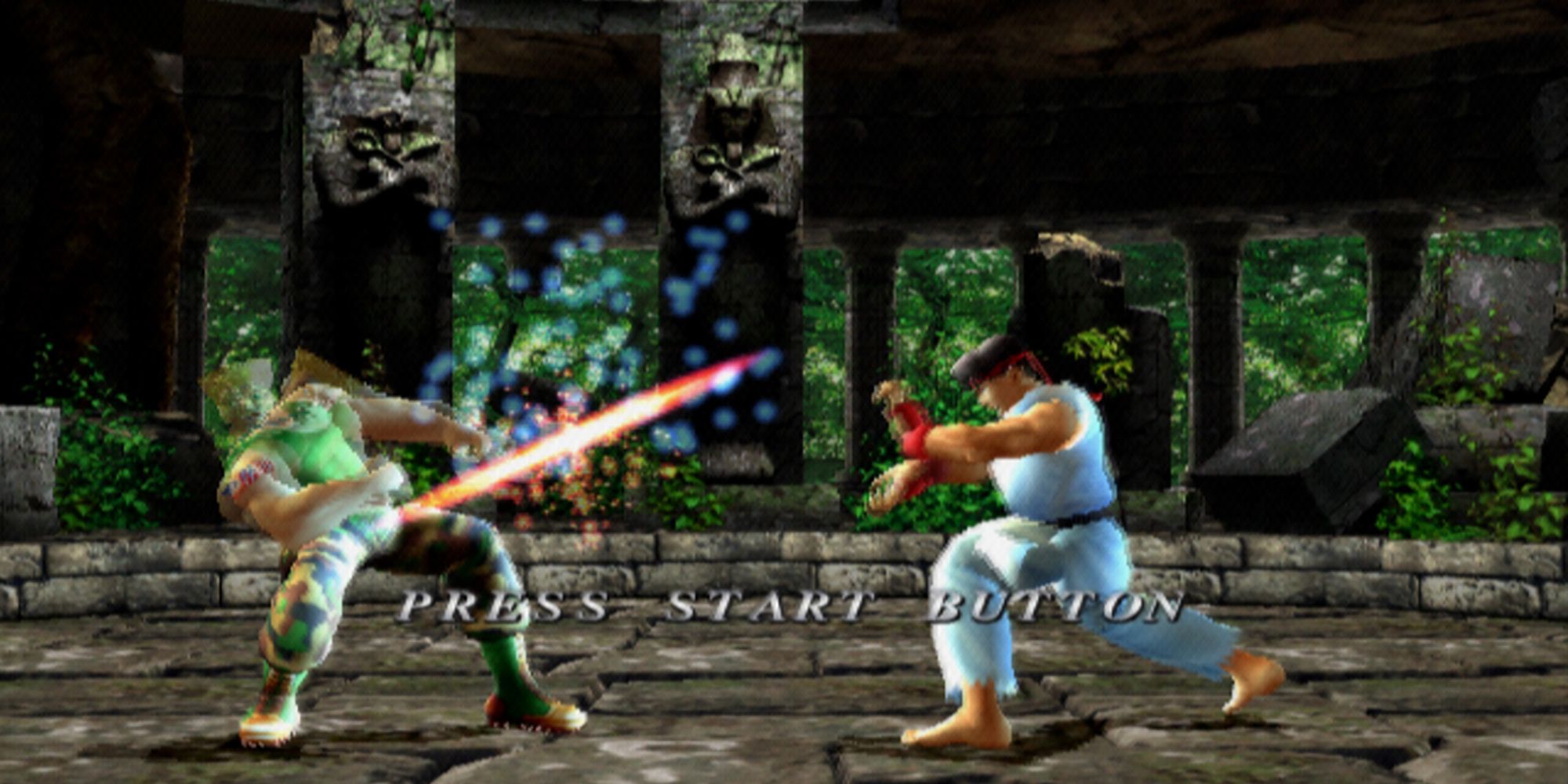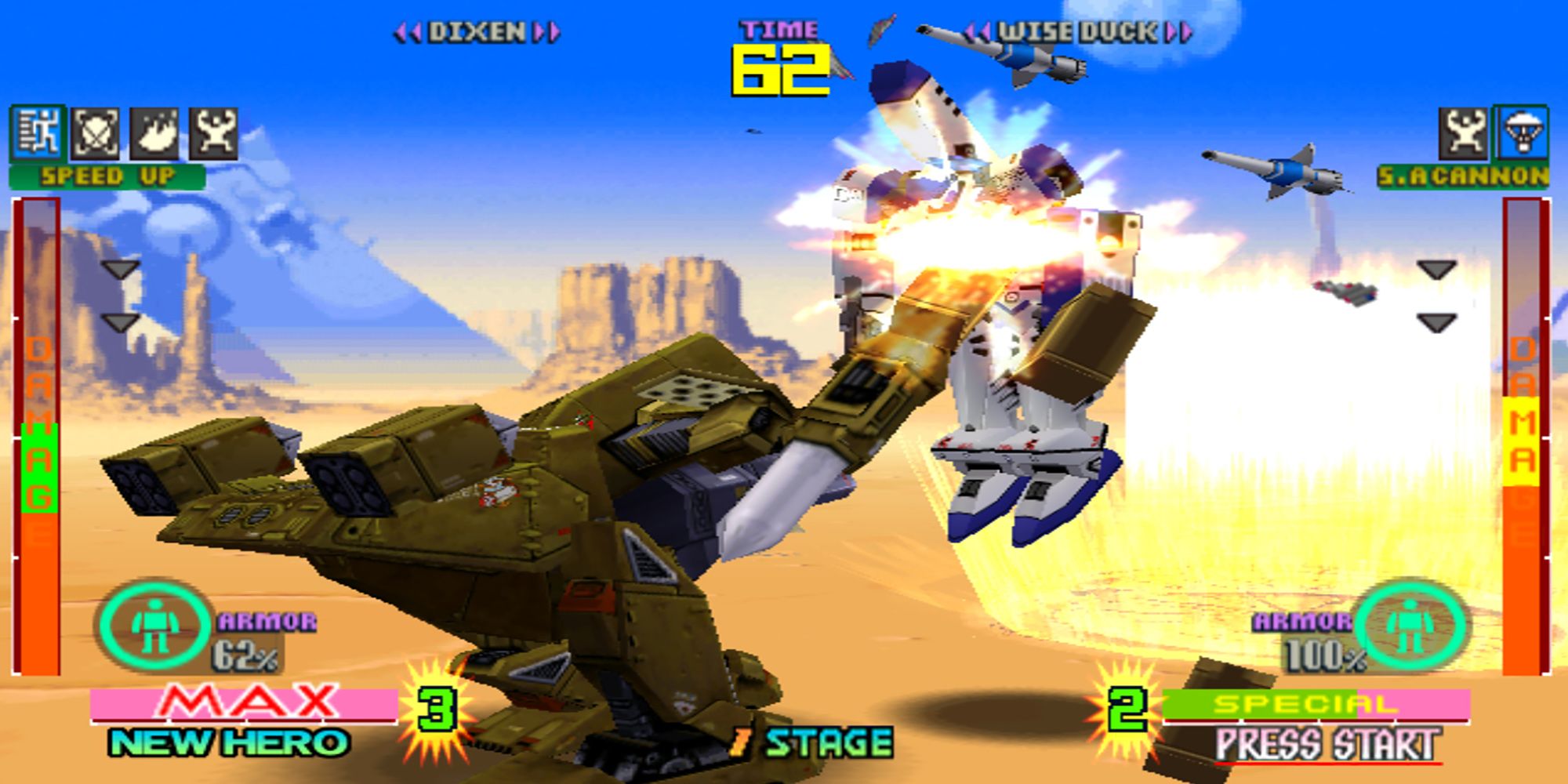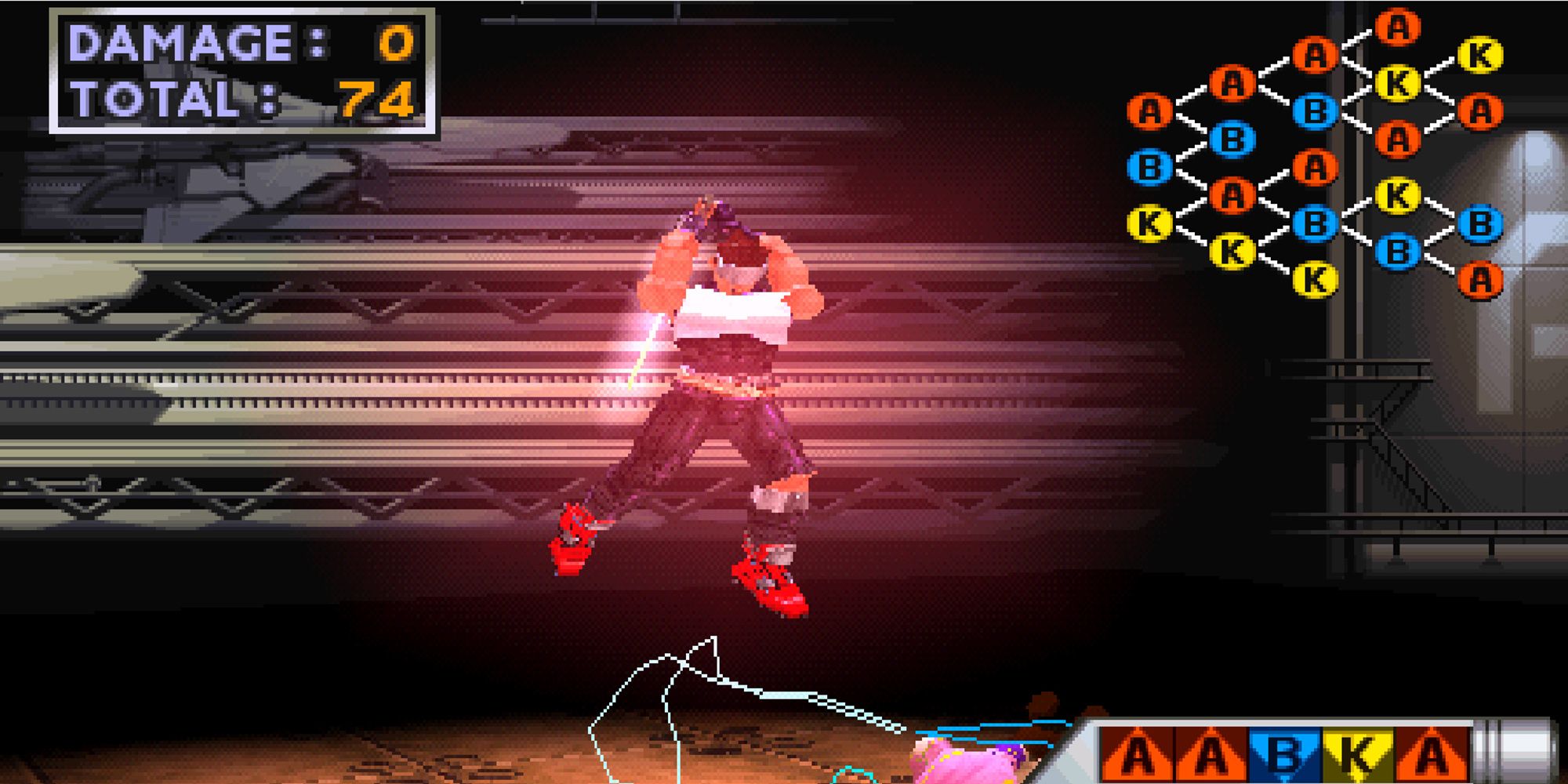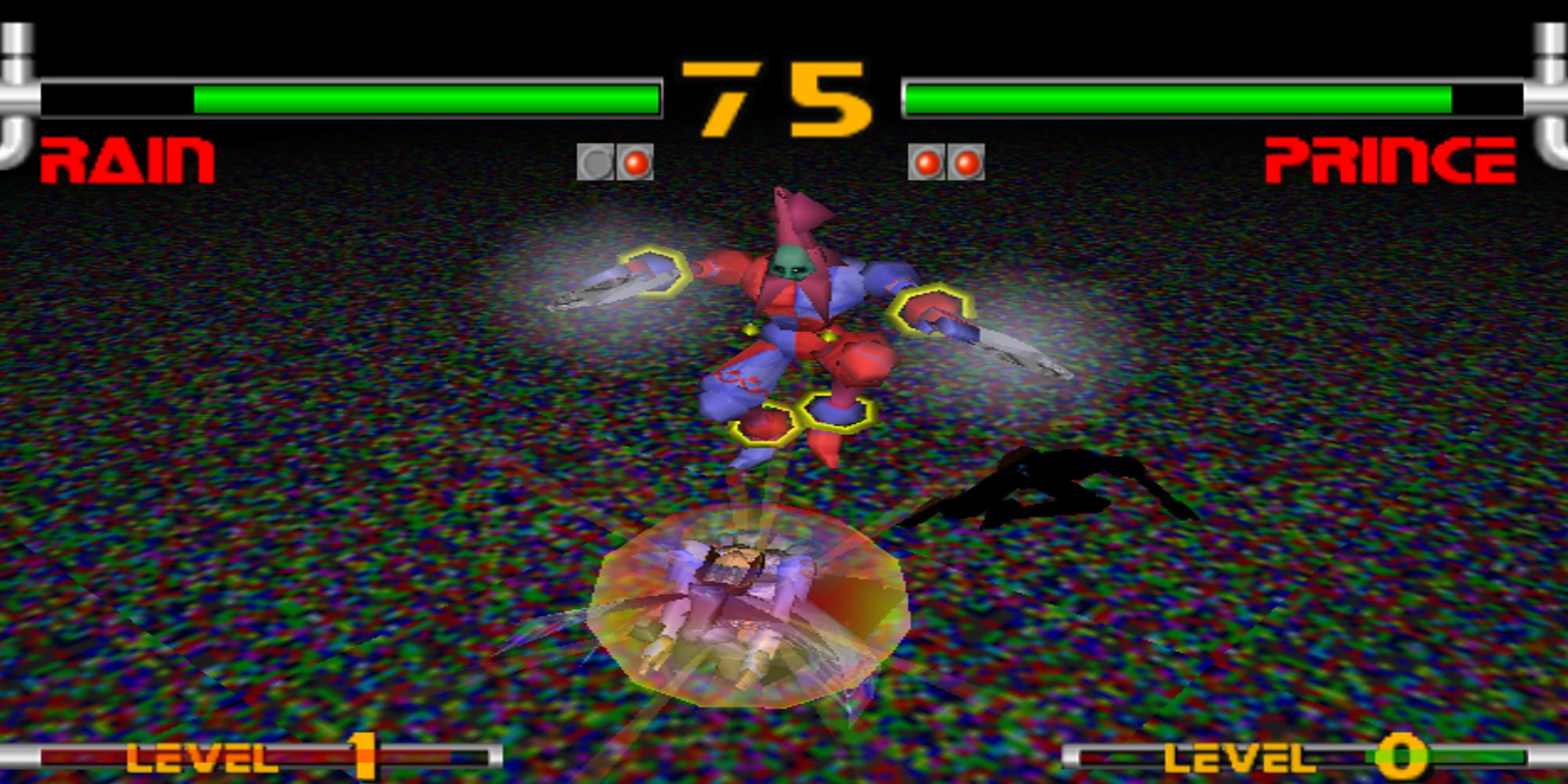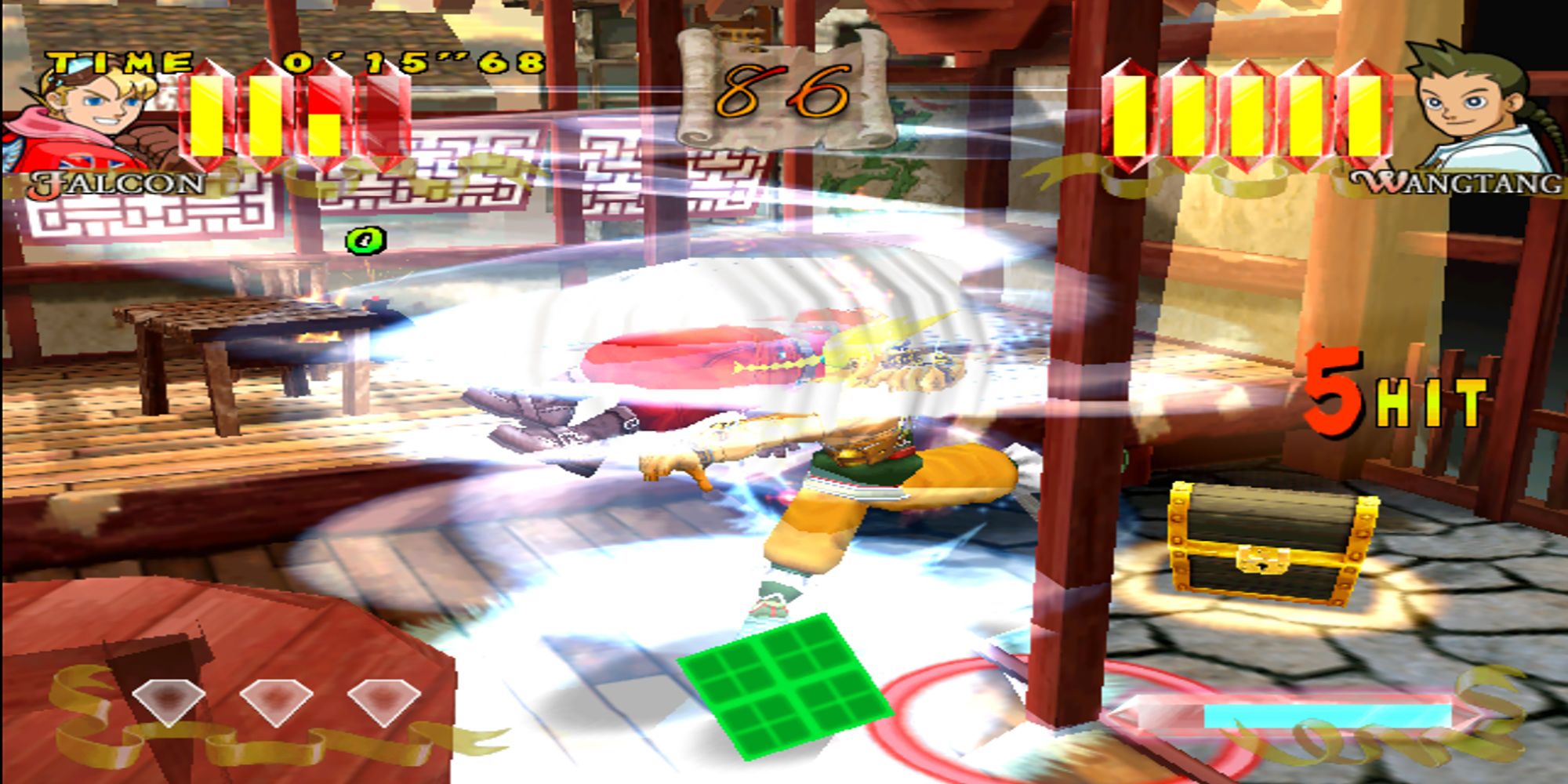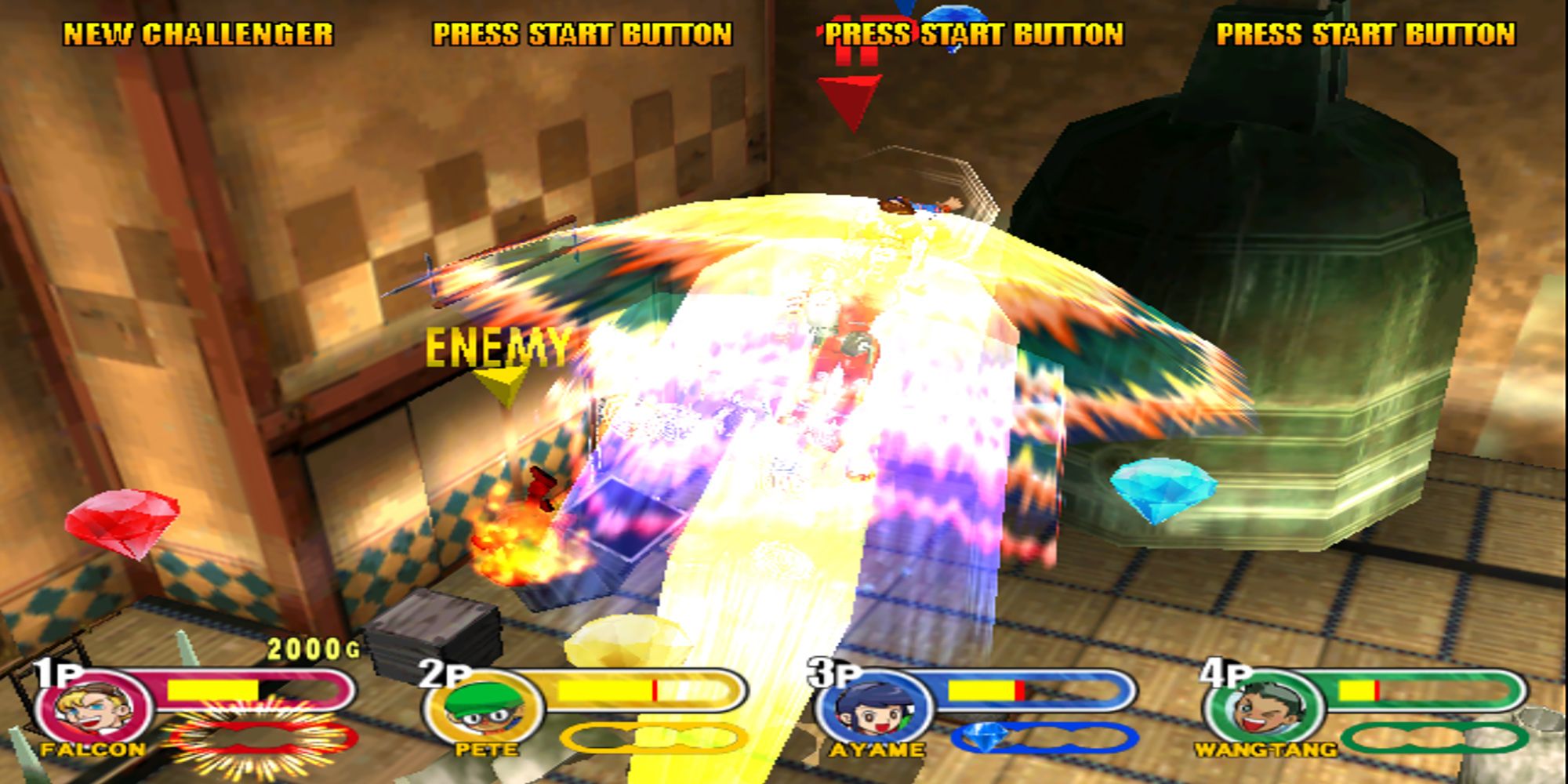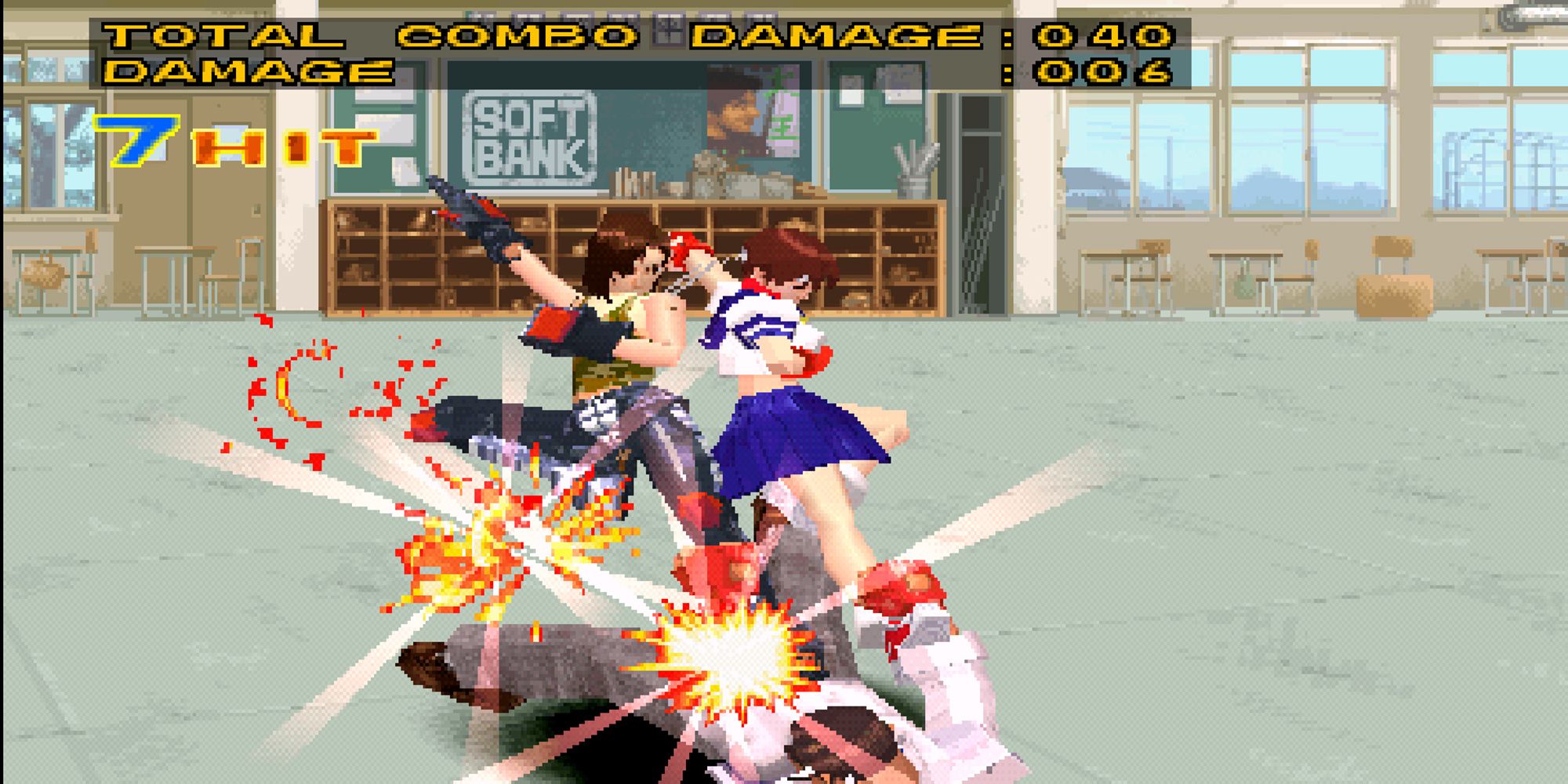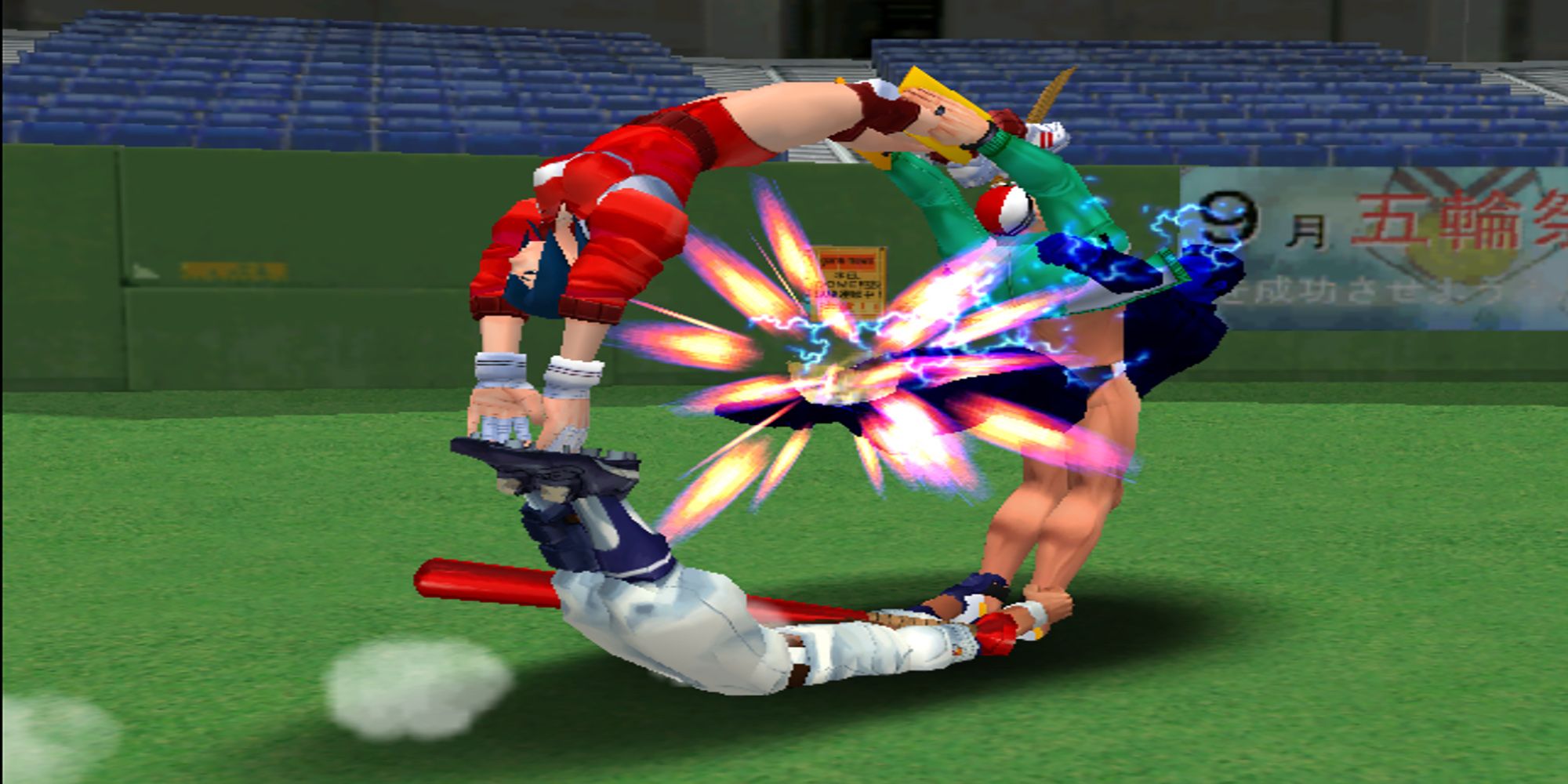Capcom Fighting Collection earned high praise for being the company's most diverse and complete arcade compilation in years. Its library includes popular series, like Darkstalkers, and rarities, like Cyberbots and Red Earth. In addition, each title includes a training mode, online play, and never-before-seen artwork. The collection's success has sparked plenty of online discourse regarding what classics should get revived next.
So, what would make a solid follow-up to CFC? A Versus fighter collection is highly requested but possibly strung up in too much licensing red tape. Other fan favorites, including most of the Street Fighter series, have already seen a re-release in the current console generation. So, we decided to narrow our scope to Capcom's 3D fighters, which include some of the company's most underrated and long-forgotten titles. Here's what we'd love to see!
10 Street Fighter EX Plus ɑ
Street Fighter EX was Capcom's first attempt at transitioning the classic 2D fighter to the polygonal realm. However, the publisher's internal developers did not have much experience with 3D polygons. So, the company granted developmental responsibility to Arika, a company founded by Street Fighter 2 co-creator Akira Nishitani. In turn, Arika introduced plenty of new characters to the series, including fan-favorite Skullomania.
Like Street Fighter games past, EX went through several updates. Finally, its definitive edition, Street Fighter EX Plus ɑ, launched on the Playstation with a hefty roster of twenty-six fighters, bonus stages, and several game modes. Asking for a PSX port in a multi-game collection might be too much. But even a port of EX Plus, the game's last arcade update, would be a welcome edition.
9 Street Fighter EX 2 Plus
Street Fighter EX 2 Plus is widely considered an updated, albeit a less-expanded version of the original EX game. The title made two significant gameplay changes. First, the Excel Combo was a custom combo mechanic similar to Street Fighter Alpha 2's. Second, the Meteor Combo was a powerful super combo that used all three bars of the super meter.
A boon of including Street Fighter EX2 Plus and its predecessor in a collection is seeing how its graphics improved. While the EX series never reached the graphical prowess of peers like Tekken 3, it's interesting to see how this series has changed, especially since it was far younger than its competitor.
8 Street Fighter EX 3
Street Fighter EX 3 exhibited plenty of changes for the series and Capcom fighting games. For instance, EX 3 never had an arcade release. Instead, it served as a launch title for the PS2. Furthermore, its Original Mode showcased the addition of dramatic battles and tag team matches to the EX formula.
Unfortunately, while EX 3 stands out among the EX series, its critical and commercial reception was lukewarm. Graphically, development cut animation frames to accommodate the speed of gameplay, which became more noticeable with PS2's graphical improvements. Plus, EX 3 was outranked, and rightfully so, by the brilliant Tekken Tag Tournament. Still, EX 3 had a lot of fun gameplay to its merit, and it deserves a second life out of Tekken's shadow.
7 Tech Romancer
Capcom's history with mecha fighters goes back further than you may know. First, the company launched a mecha beat-em-up game, Armored Warriors, in 1994. Then, a year later, a spin-off versus fighter, Cyberbots: Full Metal Madness, allowed players to fight one-on-one with mechs from the previous game. Finally, three years later, Capcom launched a new mecha fighter in arcades, Tech Romancer, which many consider Cyberbots' spiritual successor.
While Tech Romancer is not a direct sequel to Cyberbots, the latter's influence is evident. For instance, Tech Romancer has a four-button control scheme, like Cyberbots. Plus, Blodia, piloted by Jin Saotome, is a secret character in the game. So, if you enjoyed playing Cyberbots in Capcom Fighting Collection, Tech Romancer will suit your tastes.
6 Star Gladiator
Star Gladiator-Episode 1: Final Crusade is Capcom's first in-house developed 3D fighting game, making it one of this list's most notable titles. Even more surprising is the game's conception, which spawned from Capcom's failed pitches for a Star Wars fighting game made at that time. When it became apparent that Capcom would not get the license to use the IP, the company decided to create a sci-fi world of its own.
If you've played any of Namco's Soul Calibur games, you'll see the parallels between Star Gladiator and this series. After all, Soul Edge, Namco's first SC entry, predates Star Gladiator by about six months. However, Star Gladiator's unique character design and Plasma Combo System set it apart from its more notable peer.
5 Plasma Sword
Plasma Sword: Nightmare of Bilstein serves as Star Gladiator's sequel. This title significantly adjusted its predecessor's fighting system. For instance, a super gauge mechanic, the Plasma Strike System, replaced SG's Plasma Combo System. Plasma Sword also introduced a special skill mechanic (Plasma Field). Lastly, the sequel eliminated raised stages, resulting in no ring-outs.
One of the more surprising aspects of Plasma Sword's development is its console port. Considering the arcade game shared the same hardware as plenty of its PSX peers, like Rival Schools and SFEX2Plus, the game's only console port launched on Dreamcast. Unfortunately, Plasma Sword was another Capcom 3D fighter outperformed by a Namco title, Soul Calibur, which forced Plasma Sword into the realm of video game obscurity.
4 Power Stone
Capcom launched several 3D fighting games on the Dreamcast. However, the company's support for the console is more associated with its 2D fighting games: Marvel Vs. Capcom, Marvel Vs. Capcom 2, Capcom Vs. SNK, and Capcom Vs. SNK 2. However, one 3D fighter, Power Stone, is a cult classic whose name is practically synonymous with the Dreamcast's run.
In many ways, Power Stone is Capcom's answer to another famous arena fighter, Super Smash Bros., which launched on Nintendo 64 in the same year. For instance, both games have interactive environments, power-ups, and items. However, Power Stone felt more like a competitive fighter, with matches determined by KOs rather than ring-outs. Plus, collecting three power stones let fighters perform super special moves, a mechanic Smash Bros would lack until the introduction of Final Smashes in 2008's SSB Brawl.
3 Power Stone 2
Two impactful changes differentiate Power Stone 2 from the original game. First, this sequel expands matches, allowing four-player brawls in addition to Power Stone 1's one-on-one combat. Second, the stages in Power Stone 2 are much more dynamic. Rather than placing combatants in an enclosed space, PS2's stages keep players moving to new platforms and areas, avoiding numerous obstacles.
Most fans agree that while both games are entertaining to play, they serve different purposes. The first Power Stone is a more competitive fighter. Power Stone 2, however, plays more like a party game. Still, both are worth experiencing, especially in comparison to each other. So it makes sense that Power Stone 2 appears with its predecessor in a future fighting game collection.
2 Rival Schools: United By Fate
Capcom dipped its feet into 3D fighting games before Rival Schools. For instance, we already discussed Arika's Street Fighter EX series and the in-house developed Star Gladiator, both receiving warm reception. This success gave the company the courage and ambition to develop a 3D fighting game of a larger scale that ran 60 frames per second.
Rival Schools met expectations with a favorable reception from critics for its stunning graphics and frantic gameplay. In addition, this game had plenty of quirks that added to its appeal. For instance, it featured an anime-inspired story with a cast of sensational high school teachers and students. Furthermore, its team-based matches and aerial combos mirrored the mechanics from Capcom's popular VS. games.
1 Project Justice
But, of course, you could not include Rival Schools without its sequel, Project Justice, which follows its high school protagonists, like Batsu, a year after the previous game's events. However, the most significant change in this sequel is adding a third team member to matches. This addition allowed players to perform multiple Team-Up attacks, depending on the partner, plus a three-fighter Party-Up attack.
Project Justice ran on Sega's NAOMI arcade system. In turn, the game's console port launched exclusively on Dreamcast. These changes accommodated the updated visuals and an expanded roster featuring twenty-nine fighters. Unfortunately, Project Justice's exclusivity on the Dreamcast kept many players from experiencing the follow-up to one of the Playstation's most memorable fighting games. Including this title in a new collection would allow fighting fans to see what they missed over twenty years ago.

